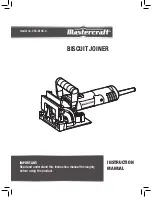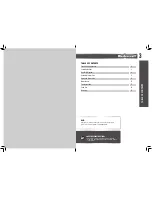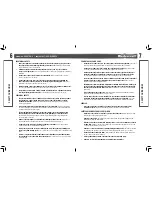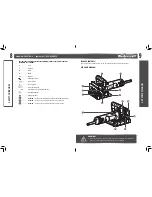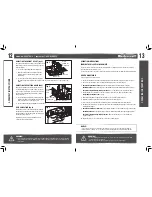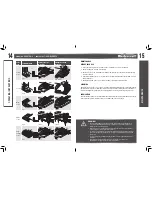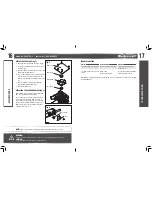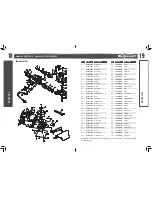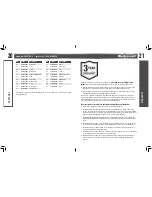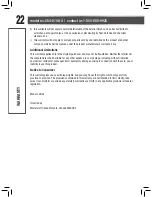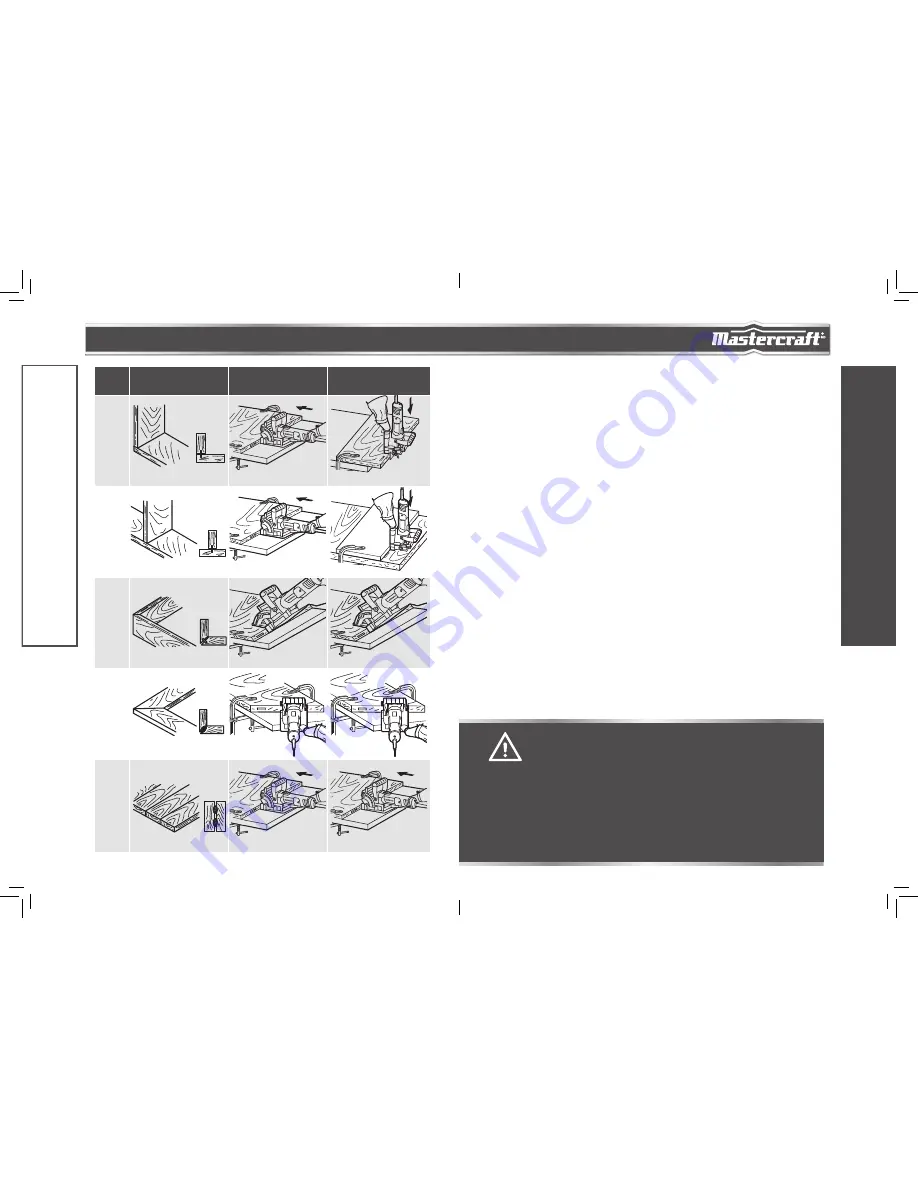
headline bars
continuation tabs
notes
warnings
15
headline bars
continuation tabs
notes
warnings
model no. 054-8106-4 | contact us 1-800-689-9928
14
Joint
Type
Joint Illustration
Cutting the First
Workpiece
Cutting the Second
Workpiece
Corner
Joint
fig a
fig a1
fig a2
T Joint
fig b
fig b1
fig b2
Mitre
Joint
fig c
fig c1
fig c2
Frame
Joint
fig d
fig d1
fig d2
Edge-
To-Edge
Joint
fig e
fig e1
fig e2
MAINTENANCE
BEFORE EACH USE
1. Inspect the biscuit joiner, the on/off switch, the cord and the accessories for damage.
2. Check for damaged, missing, or worn parts.
3. Check for loose screws, misalignment or binding of moving parts, or any other condition that may
affect the operation.
4. If abnormal vibration or noise occurs, turn the tool off immediately and have the problem corrected
before further use.
5. Unplug the tool from power source before cleaning or performing any maintenance.
CLEANING
Unplug the tool from power source before cleaning or performing any maintenance. Regularly clean the
dust and debris from the tool with compressed air or a brush. Using compressed air may be the most
effective cleaning method. Always wear safety goggles when cleaning tools using compressed air.
LUBRICATION
All of the bearings in this tool are lubricated with a sufficient amount of high-grade lubricant for the life
of the unit under normal conditions. Therefore, no further lubrication is required.
OPERA
TING INSTRUCTIONS
MAINTENANCE
WARNING!
• Do not let brake fluids, gasoline and petroleum-based products, penetrating oil, etc.
come into contact with plastic parts. These substances contain chemicals that can
damage, weaken, or destroy plastic.
• When servicing, use only identical replacement parts. The use of any other parts may
create a hazard or cause damage to the product.
• Use only accessories that are recommended for this biscuit joiner by the manufacturer.
Accessories that may be suitable for one tool may become hazardous when used with
another tool.
• To ensure safety and reliability, all repairs should be performed by a qualified service
technician.
• If the replacement of the supply cord is necessary, this has to be done by the
manufacturer or his agent in order to avoid a safety hazard.
FPO

